Where the hell’s Cooper?
This article was originally published in the June 2006 issue of Minnesota Monthly magazine.
A corner of the Squirrel Cage Bar in Willow River still pays tribute to the town’s most infamous citizen. At the top of a collection of framed newspaper clippings is a computer printout asking a question that once appeared on hundreds of bumper stickers in the area: “Where the hell’s Cooper?”
U. S. Marshals are still trying to answer that question.
William Lloyd David Cooper — more commonly known as “Wild Bill” Cooper — was once one of the marshals’ 15 most-wanted criminals in the country, convicted of importing large quantities of marijuana from Mexico into the United States, among other crimes.
Before he became a fugitive, he was an adventurer, leading two widely publicized snowmobile expeditions — one from Willow River to Anchorage, Alaska, in 1971, and another from Forrest Lake to the northern tip of Greenland in 1972 and ’73.
In Willow River, Cooper is still fondly remembered as the former owner of the Squirrel Cage and a great friend to many. Some say he’s still alive and running free, though U.S. Marshals are convinced he was killed in 1977.
“Everybody’s got their opinion,” said Art Underhill, who owns the local lumberyard across the street from the Squirrel Cage. “Everybody likes him. Probably nobody wants to believe that he’s dead. They want to see him again, but I don’t think that’ll happen.”
It was February 1976 when U. S. Customs agents tracked one of Cooper’s airplanes making trips from Minnesota to Mexico. After the twin-engine Aero Commander was found in Sandstone with marijuana debris scattered in and around it, Cooper and three accomplices were arrested.
Judge Miles Lord was scheduled to sentence Cooper on May 26, 1977, for 26 counts of federal drug smuggling, weapons and currency violations, as well as aiding and abetting in the 1974 robbery of the Sturgeon Lake State Bank, but Cooper failed to appear in court. According to one report, he drove a Winnebago camper to Denver that day, left it at a friend’s house, and headed south to Arizona.
Less than two months later, Cooper telephoned Minneapolis Tribune reporter Joe Rigert to say he was “lying on the beach having a good time” somewhere out of the country. According to Rigert, Cooper felt the government reneged on a promise that he wouldn’t be sentenced until three months later, so now it would have to spend some money looking for him.
Although Cooper had been portrayed as the central figure of a marijuana importation scheme, he was actually more of a middleman, distributing to other buyers. But the scope of the organization he was involved in was large, and U.S. officials believed Cooper was central to arranging numerous drug smuggling flights — often piloting the planes himself.
Steven K. Swensen, a supervisory deputy for the U.S. Marshals Service, District of Minnesota, was the lead investigator of a multi-agency task force that worked on Cooper’s case in the late 1980s. He believes Cooper was killed by the Mexican drug traffickers he was working with.
On June 9, 1977, the marijuana cartel turned on its former ally: at a Phoenix motel, they tied him to a bed and pistol-whipped him.
“The drug traffickers accused him of rolling over to the feds, double-crossing him on previous drug transactions,” Swensen said. “They actually shot a round next to his head and said that the next time would be the last time, but that right now they would let him live and that he would pay off his debts by flying more drug shipments from Mexico into the United States.”
Swensen said his information comes from informants, and was also confirmed in a handwritten letter that Cooper wrote to his son the day after the incident.
Just one week later, Cooper crashed a Cessna aircraft near Arizona City with a cargo of 700 lbs. of marijuana, and walked away. Two weeks after that, he was picked up in Tucson on drug-related charges, but he was using the alias “James Clark” and was released on bond before his finger prints revealed him as a fugitive.
Then, on Aug. 20, Mexican Federal Judicial Police conducted a raid at an airstrip outside Senoyta in the Mexican province of Sonora. After a shootout, five smugglers were arrested with nearly one ton of marijuana that had been loaded onto an aircraft Cooper had stolen. Known to his accomplices as “John Clark,” Cooper had flown the plane and escaped the gun battle on foot.
“That would have been the third time — four if you count the crash in Arizona City — where Cooper had lost a major drug shipment for smugglers.” Swensen said. “It’s my belief that the smugglers were confirmed in their belief that he was working for the government and they took appropriate action.”
Swensen said members of the cartel admitted in the late 1980s that they found Cooper’s body the day after the incident. They said he had been shot by Federales and had died of heat exposure before they found him. So they buried his body in a flood stream 10 miles west of Sonoyta and three miles south of Mexican Highway 2.
But Swensen believes Cooper was still alive when the other smugglers found him. “There’s no doubt in my mind that he was shot [and wounded] by the Federales and executed by the drug smugglers,” he said.
Some people in the Willow River area, however, don’t believe Cooper went down like that.
“No,” said Jerry DeRungs, editor and publisher of the Moose Lake Star Gazette, a weekly newspaper that covers southern Carlton and northern Pine counties, including the Willow River area. “I think Cooper made it all the way up to Canada somewhere. That was always his haven, so chances are that he hung out there, and who knows what name he was going under by that time?”
Cooper was born and raised in Canada, and made many return trips in the 1970s, both by snowmobile and airplane. But Deputy Steve Mason, another U. S. Marshal for the District of Minnesota who is currently working on the case, dismisses rumors that Cooper was living in Canada during the 1980s as “not credible.” The case remains open until a body or remains are found, though Mason, like Swensen, believes Cooper is no longer alive.
Dean Nylen, who rented Cooper a garage stall in Willow River, said he heard through a mutual friend that Cooper died just a few years ago.
“He was around, after he ran from the law,” Nylen said. “There were people that saw him. He didn’t come back to Minnesota. I heard that people had seen him in Arizona — people that went to Arizona for the winter. He would pop in on them once in a while for a few minutes and then disappear.”
But Underhill, the lumberyard owner, believes Swensen’s theory and thinks the various tales of Cooper finding freedom are just part Willow River’s “Wild Bill” legend.
“He was a great guy that went over the edge,” Underhill said. “He got into a bind. The bar probably wasn’t doing good and I think that’s why he probably did some of the things he did. But he was a good guy. He’d give the shirt off his back to anybody. And most of the people around town would probably do the same for him.”
The “Wild Bill” legend has been given a boost over the years by Cooper’s loose connections to two high-profile crimes he likely had nothing to do with.
The 1971 hijacking of Northwest Airlines flight 305 seems right up “Wild Bill’s” alley in terms of adventure. After receiving $200,000 in cash and several parachutes, the hijacker allowed passengers to get off the plane as scheduled in Seattle. Then, he instructed the plane’s crew to fly him to Mexico. As a man who led snowmobile excursions through Arctic conditions might do, the hijacker then jumped from the Boeing 727 into the cold November darkness with a 21 lb. package of money tied to his waist.
Because the hijacker identified himself as Dan Cooper, and a movie about the hijacking, The Pursuit of D.B. Cooper, came out in 1981 — while “Wild Bill” was among the nation’s 15 most wanted men — the rumors that Bill Cooper was Dan Cooper began to circulate. In fact, “Wild Bill” did at one time live in Portland, Ore., the city where the flight originated. But FBI composite sketches of the hijacker do not resemble Bill Cooper.
Swensen said rumors of “Wild Bill’s” potential connection to the hijacking have resurfaced many times over the years. “It’s always come to nothing,” he said. “It’s my belief and certainly everybody that I’ve talked to in the Marshals Service that there’s no connection between D. B. Cooper and William Lloyd David Cooper.”
His purported involvement in the 1972 snatching of Orono socialite Virginia Piper is also unlikely, though Wild Bill offered to give details of the kidnapping as part of a plea agreement before he jumped bail. Though Cooper failed to produce any evidence, two men were indicted a year later, one of them from Willow River. The two men were convicted and sentenced to life in prison, but the convictions were overturned in 1979.
A ransom of $1 million in used $20 bills was paid for the safe return of Piper. At the time it was reported as the largest ransom in U.S. history and the third largest in the world. Piper was found unharmed, chained to a tree in Jay Cooke State Park, outside Duluth. The FBI launched an extensive investigation, with as many as 250 agents exploring leads, but the case remains open. Piper died of cancer in 1988.
Cooper’s legend is such that there’s even a true story about an untrue story about him. DeRungs said he was duped as a young reporter into writing that the search for Cooper was over.
“A guy stopped into the office — it would have been 1983 or ’84 — and flashed an FBI badge,” DeRungs said. “He told me they’d picked (Cooper) up in Chicago, giving details that I thought only they would know. We ran with a short blurb on the front page because it was a Tuesday afternoon and we were on deadline. We ran with it before I could even take and check the guy out.”
That man, Leon Cremer, turned out to be a fugitive himself. “Since he gave me his name and so forth, I turned it over to the police and he ended up getting arrested because he had escaped from jail. Obviously he had known something about Bill Cooper. Why he would go into a newspaper, who knows?”
Bizarre circumstances even surround the search for Cooper’s remains and the failed efforts to confirm his death. In March 1989, Ernesto Tercero, one of the smugglers arrested in the 1977 incident in which Cooper was last seen, agreed to show U.S. Marshals where Wild Bill’s body was allegedly buried.
A planned trip to the site was delayed, however, when Mexican Federal Judicial Police stumbled on 15 bodies at Rancho Santa Elena in Matamoros — victims of a cult of drug traffickers who believed ritual sacrifices could shield them from police. The investigation of this case pushed back efforts by the Marshals, who needed the assistance of Mexican police to search for Cooper’s remains, until June of that year, when negotiations with Tercero broke down and he refused to provide further information. Tercero has since left prison and isn’t talking.
In spite of Cooper’s criminal history and the exaggerated stories about him, most people in Willow River still remember him as charming guy who loved adventure.
“Pert near everybody that knew him liked him,” Nylen said. “They tried to keep him loose, keep him free. He was kind of a character. He was also a smart man. He could’ve made a lot of money being honest, but he didn’t find enough excitement in that.”
Swensen confirmed that Cooper’s popularity made pursuing him difficult.
“He was a friendly guy, and that at times hindered our investigation,” he said. “People did not want to assist us in finding him and arresting him. And then, as the days turned into months and the months turned into years, it became almost folklore to certain people.”
Even Swensen himself is a little caught up in the admiration of Wild Bill.
“He was cool. When he was arrested those numerous times and gave the aliases and walked away and survived one incident after another, I don’t think he broke a sweat,” Swensen said. “From everything that I knew about him, I would have relished the opportunity to meet him face to face.”
Cooper had secured his bail in 1977 with the deed to his Willow River properties, which included the Squirrel Cage, a neighboring hotel and his home. But, at the same time, he sold those properties to finance his escape, leaving a Minneapolis bail bondsman out $40,000.
It was Underhill and a partner who bought the properties from Cooper. Underhill said that after a contract was drawn up, Cooper asked for a new one with different terms.
“He must’ve known he was going because he took a lot less money,” Underhill said. “He said if we could come up with X amount of dollars he would be paid out of the contract. So we did and then we rewrote the contract. Then he took the old contract to the bondsman for collateral. He left town after that.”
Did Underhill have any idea Cooper was about to go on the lam? “Maybe a little inkling,” he said.
The Squirrel Cage, known as “The Home of the Nuts,” has since changed hands several times. The white, two-story house Cooper lived in next to the bar and motel is now home to Delbert and Dorothy Imholte. Dorothy said they’ve lived there about six years, and have heard their own share of rumors about the former owner.
“The story used to go around here that [Cooper] was supposed to have $20,000 buried in this house,” she said. “Well, we haven’t come across anything. And I’m a pretty good housekeeper.”
Recommended Links:
Leave a Comment
Only registered members can post a comment , Login / Register Here


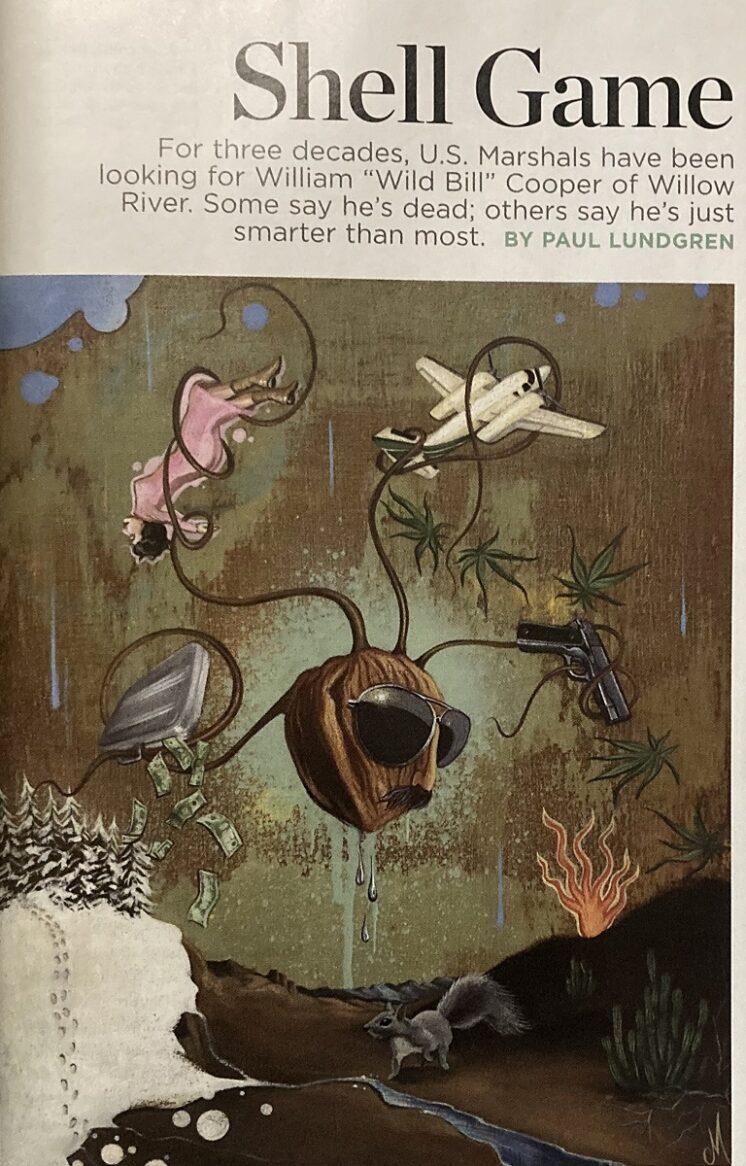
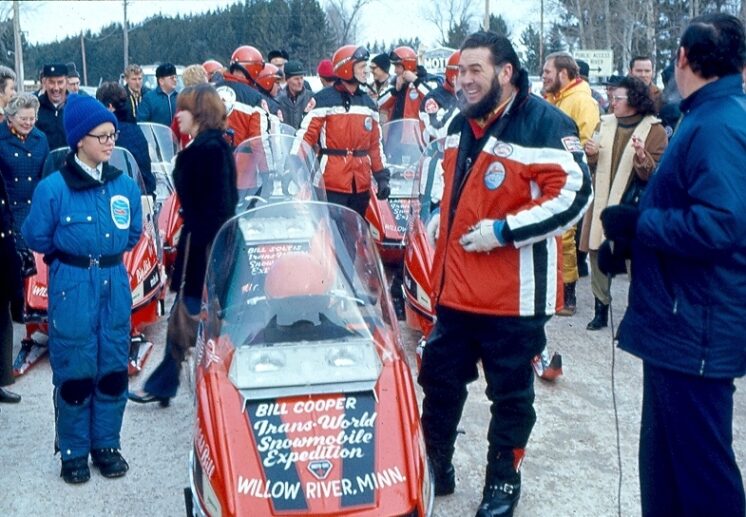
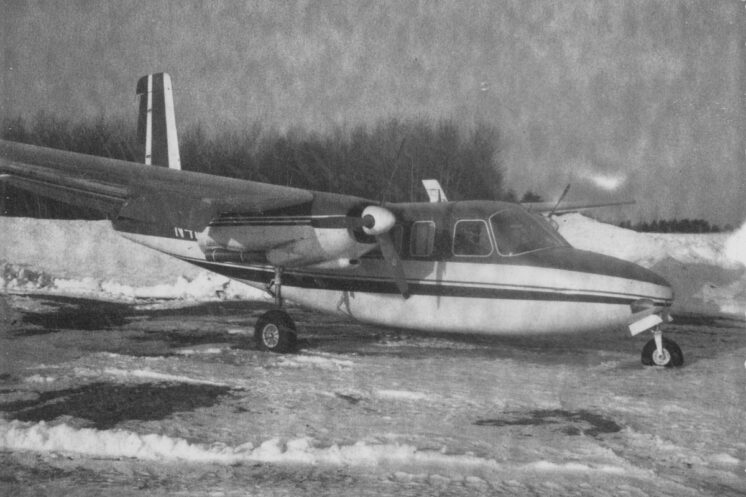
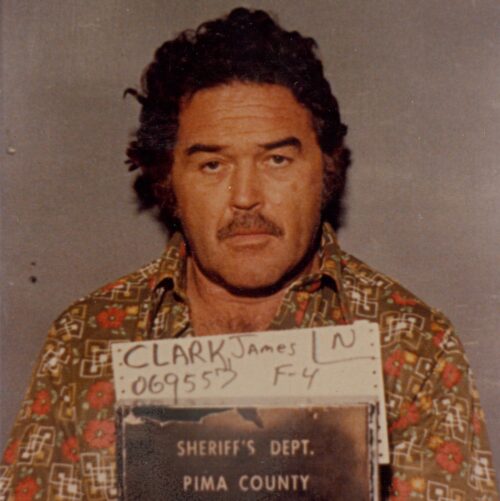
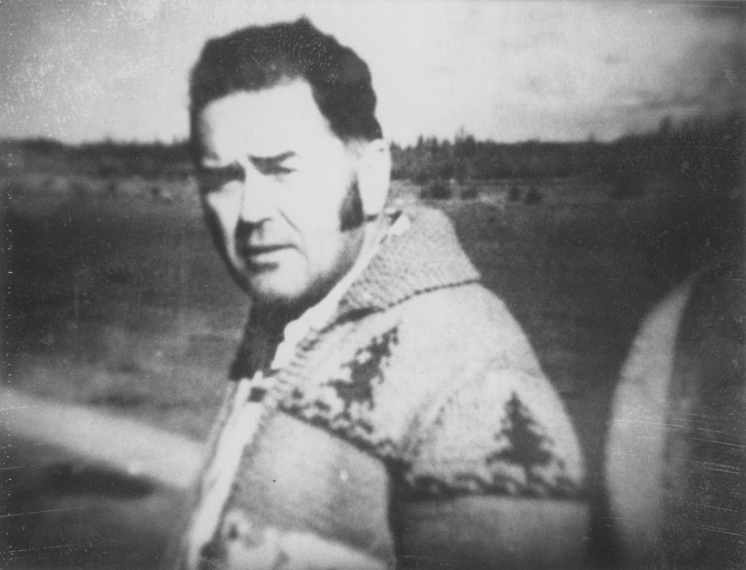
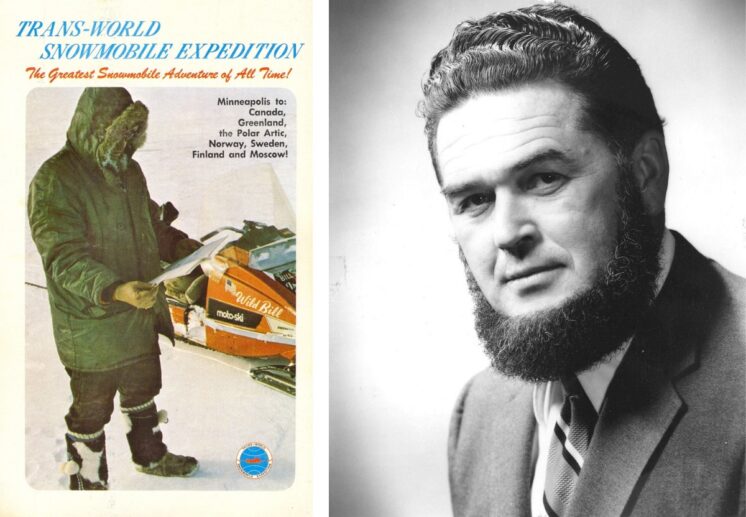
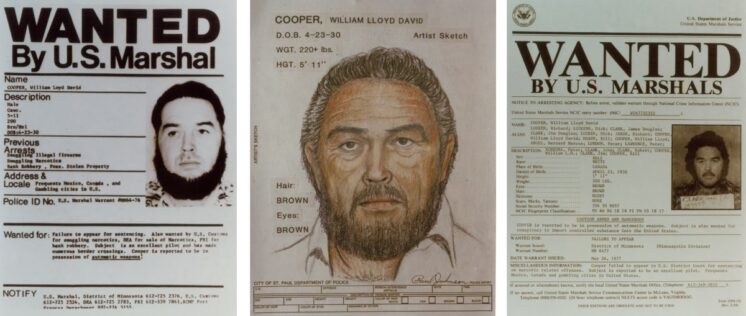
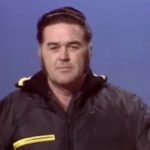
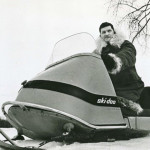

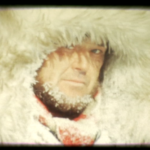








No Comments